The problem with Platoon: why Oliver Stone's Vietnam epic made real veterans 'furious'
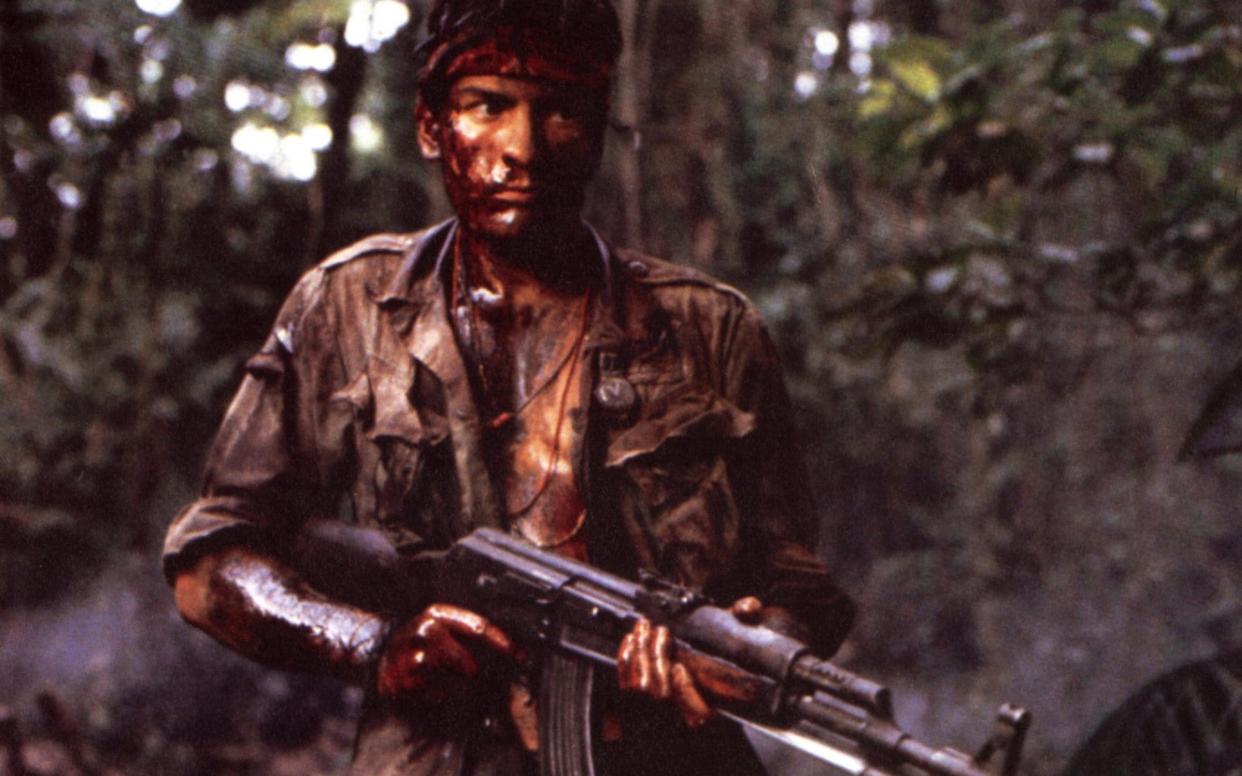
In 1986, Platoon blew viewers away with a heavy dose of cinematic napalm: a merciless, ultra-violent depiction of the horror and lawlessness of the Vietnam War. Written and directed by Oliver Stone – a semi-autobiographical account of his own service – Platoon was promoted as “the first real movie about Vietnam.”
“Vietnam, the way it really was,” said Time about the film in 1987. The Washington Post agreed: “Its accuracy is unassailable.”
Platoon was nominated for eight Oscars and won four, including Best Picture and Best Director, instantly immortalised by the image of Willem Dafoe’s shot-to-pieces sergeant, on his knees, arms raised Christ-like.
Not everyone was impressed. Take Wallace Terry, a Time journalist who reported from the war for two years, spending much time with African-American soldiers, and wrote the 1984 book Bloods: Black Veterans of the Vietnam War. Terry called Platoon a “slap in the face” and “an abysmal racist disaster.”
“Platoon captures the horror, terror and trauma of the war like no other Vietnam film,” Terry told People in 1987. “But sadly it still barely rises above the age-old Hollywood stereotypes of blacks as celluloid savages and c––ns who do silly things.”
It’s perhaps fitting that Oliver Stone was once attached to direct Spike Lee’s Da 5 Bloods, which is now on Netflix. The original spec script was called The Last Tour, about four aging white soldiers.
Lee rewrote the script with Kevin Willmott. "We flipped it," the director told The Hollywood Reporter. "Put our flavor on it, some barbecue sauce, some funk, some Marvin Gaye. And there you have it."
But Lee’s film – which comes in the midst of Black Lives Matter protests, racist monuments being tossed into rivers, and a debate on racist characters on TV – is the first major movie to deal with the black experience in Vietnam. Contrary to the depiction in previous Vietnam films – Platoon included – black soldiers were not just supporting players in the war.
A disproportionately high number of African-Americans were drafted and killed. They faced extreme racial prejudice within their own ranks. Yet 20 black soldiers were awarded the Medal of Honor in Vietnam.
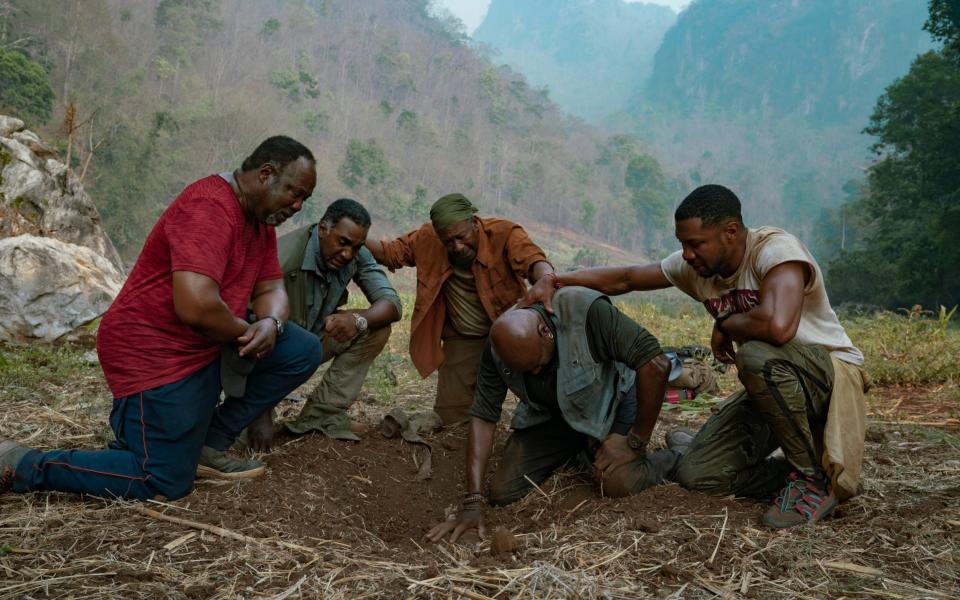
Among them was the first ever black recipient, Private First Class Milton L. Olive. At just 18 years old, Olive leapt onto a grenade while pursuing the enemy at Phu Cuong.
His Medal of Honor citation details the incident: “As the platoon pursued the insurgents, Pfc. Olive and 4 other soldiers were moving through the jungle together when a grenade was thrown into their midst. Olive saw the grenade, and then saved the lives of his fellow soldiers at the sacrifice of his own by grabbing the grenade in his hand and falling on it to absorb the blast with his body.”
Da 5 Bloods tells the story of four vets (Clark Peters, Delroy Lindo, Norm Lewis, and Isiah Whitlock Jr), who return to Nam to locate the remains of a fallen comrade (Chadwick Boseman) and some long-buried gold. The effects and memory of the war – particularly for PSTD sufferer Paul (a towering performance from Lindo) – are still raging.
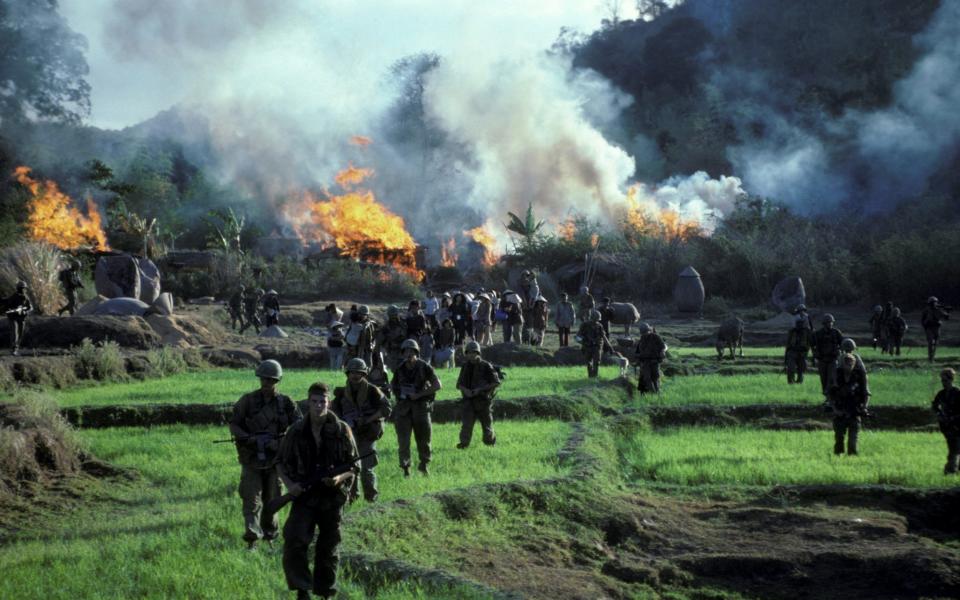
More than a revisionist Nam epic, Lee’s film is a lesson on black American history (Pfc. Olive gets a nod, along with other historical figures, such as Crispus Attucks, the first American killed in the Boston Massacre and American Revolution). “We been dying for this country since the very get,” says Boseman’s character, Stormin’ Norman, about the sacrifice and suffering done for the USA.
Vietnam was the first racially integrated war for the American military. Wallace Terry called it: “Democracy in a foxhole — the same mud, the same blood.” Writing in his book, he also said: “In Vietnam, Uncle Sam was an equal opportunity employer.”
Between 1965 and 1967, African-Americans represented just 11 percent of the US population, but 23 percent of Vietnam combat casualties. The number dropped to 14 percent by 1969, still a significantly higher representation. Platoon, of course, is written from the perspective of Oliver Stone’s own Vietnam experience.
A fresh-faced Charlie Sheen plays Chris Taylor, a rich kid who’s transformed by the war – pulled between the forces of good (Willem Dafoe’s Sgt. Elias) and forces of being gun-toting crackers (Tom Berenger’s Sgt. Barnes).

Like Sheen’s character, Stone dropped out of college and volunteered for combat. He served in three different platoons. Stone wrote the script in 1976, but it sat unmade for almost a decade. Thirty-five years after its release it feels like an outdated style of war film – a Hollywood take that’s drawn in broad, if morally complex, strokes.
But at the time, New York Times critic Vincent Canby called Platoon “the best work of any kind about the Vietnam War since Michael Herr's vigorous and hallucinatory book Dispatches.”
Platoon still has plenty of firepower: Tom Berenger’s heavily scarred, sergeant-on-the-edge Barnes is terrifying; and a scene that threatens to turn into a village massacre is intensely upetting – bringing back memories of the hundreds of Vietnamese civilians killed at My Lai. (“Looking back I have to say there were people who were predisposed to kill anything, and other people who are predisposed to restraint,” Stone told The Guardian about his Nam experience.)

Platoon does include a handful of African-American soldiers, played by Keith David, Forest Whitaker, Reggie Johnson, and the future Candyman, Tony Todd. But they are reserve players in what amounts to a battle for the morality of the principal white guys.
“Nowhere do you see blacks in any kind of heroic or leadership situation,” said Wallace Terry after seeing the film. King (Keith David) introduces Taylor to drugs at a bunker party. An alternative, mostly-white party happens at another bunker. (Any right-minded soldier would rather be smoking dope through a rifle and dancing to Smokey Robinson than getting amped-up on booze and testosterone, waiting for Barnes to snap with an assault rifle.)
Also among the black characters is the consistently irresponsible Junior (Reggie Johnson), who falls asleep on watch duty, allowing the NVA to ambush the unit.
Later, Junior is among the soldiers who attempt to rape girls when they turn over the village, and he tries to dodge fighting by pouring a burning chemical repellent on his feet. When the final battle begins, Junior scarpers from his bunker and crashes into a tree. He quickly gets his comeuppance – he gets skewered with a bayonet.
After the battle, another African-American soldier, Francis (Corey Glover), stabs himself in the leg to escape further action. “Blacks are portrayed as malingerers, afraid of combat, drug abusers and eager to get out of the fighting,” said Wallace Terry in 1987. “It goes against what I know of the black experience in Vietnam.”

According to Terry, African-American vets were “furious” about the film. He said: “I’ve been all around the country since its release and everywhere they say, ‘We still haven’t had our story told.’”
One black veteran who saw it was Bennie J. Swans. Speaking to the Chicago Tribune in 1987, Swans saw the black characters in Platoon as “unable to lead and unable to follow.” Swans himself was awarded two Silver Stars, four Bronze Stars, the Air Medal and a Purple Heart during seven months with the 1st Air Cavalry Division
“Millions of people are going to accept this movie as an accurate picture of blacks in the war,” he said. “It re-enforces old, untrue stereotypes. That makes this a dangerous movie.”
Terry Wallace believed that part Martin Luther King’s dream came true in Vietnam. Wallace said: “In his famous 1963 speech at the Lincoln Memorial he said he had a dream that one day the sons of former slaves and sons of slave owners would sit at the same table. That dream came true in only one place, the front lines of Vietnam […] I’m talking about thousands of Americans who found their common humanity on the front, where they shared the last drop of water, where they gave their lives for each other.”
But Terry would also say “putting on a uniform doesn’t wipe away racism”. He reported that “another war being fought in Vietnam — between black and white Americans.”
In 1969, the US initiated the controversial Project 100,000, which lowered the requirement standards for entry into the army. It would allow unemployed and poorly educated men to join the fighting.
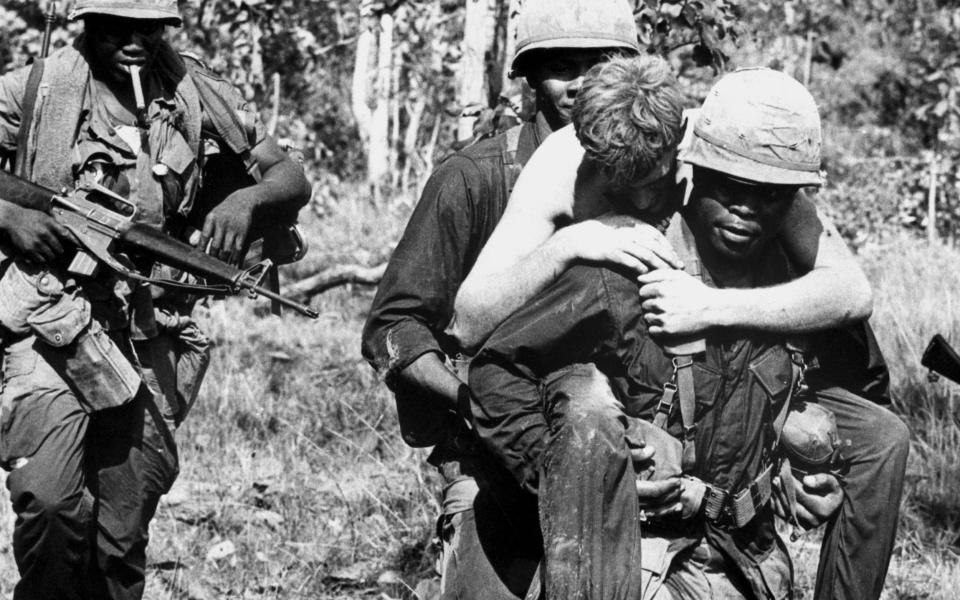
Of the “New Standards Men”, 41 percent were black. They were joined by an influx of prejudiced, poorly-educated whites from southern states. Of these men given combat assignments, 44.5 percent were black. Just 38.8 percent were white.
Draft boards in 1967 were 98.5 percent white (in fact, a draft board member in Louisiana was a Ku Klux Klan Grand Wizard) and black soldiers received disproportionate treatment overall: they were sent to the frontline; given more menial duties; targeted for punishment; and denied promotion while white recruits surpassed them.
As detailed in the New York Times, a 1972 Defense Department study found that African-American received 25.5 percent of non-judicial punishments and 34.3 percent of courts-martial in Vietnam.
Speaking in Wallace Terry’s book Bloods, Private First Class Reginald Edwards of the 9th regiment Marines recalled that the first person to be killed in each new battalion of the 9th Marines was black – usually shot by their own men as they came back over their lines (“It was more fun sneakin’ into Ho Chi Minh’s house than comin’ back into the lines of Danang”). He was also constantly put on point – the most vulnerable position.
A 1972 documantary called Winter Soldier recalled how atrocities committed against Vietnamese civilians were racially motivated – likened to racial violence happening back in the US at the time. “They’re after the Vietnamese because they’re racists,” said one vet. “My first sergeant was a Ku Klux Klan man.”
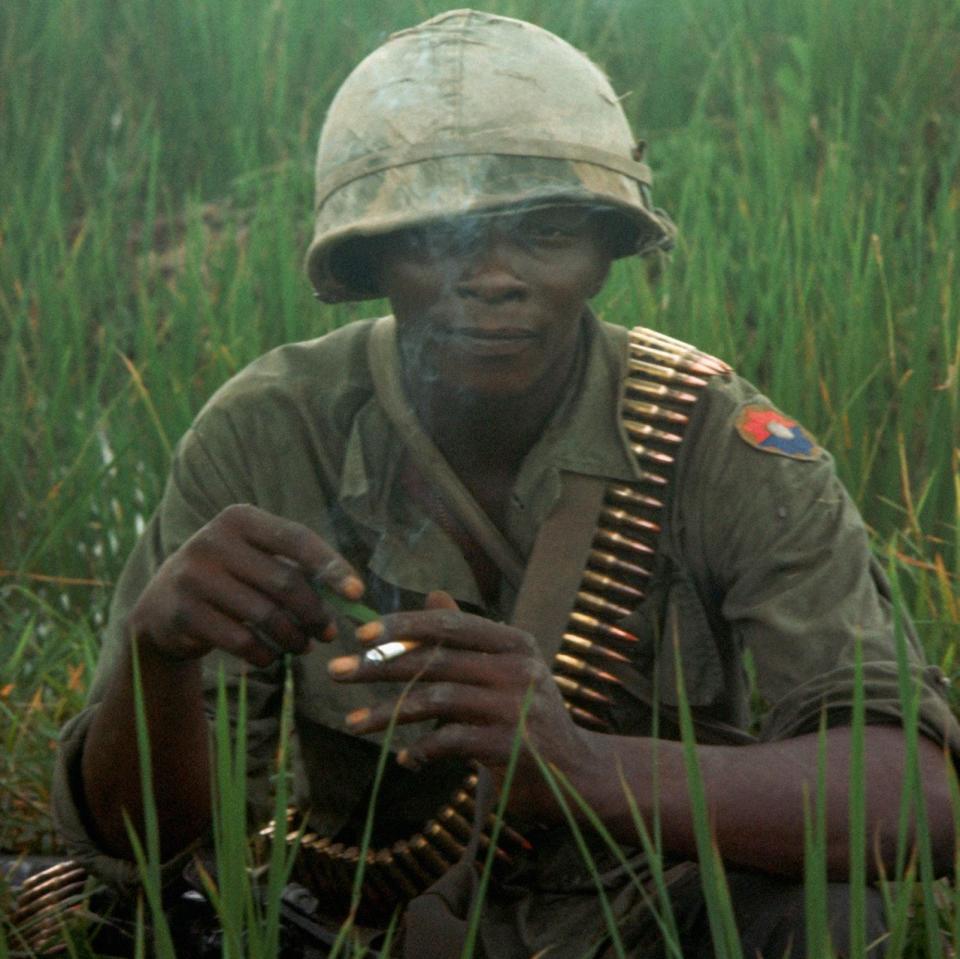
There was more: racist graffiti; a ban on long afro hair and soul music ("If blacks can account for up to 22 percent of the dying,” said Terry, “they should at least have 22 percent of the jukebox or the music on Armed Forces radio"); and African-American officers – who made up just 2 percent of the officer corps – faced insubordination from white soldiers. There was also fighting between black and white soldiers in South Vietnam drinking dens.
“By 1967 a new breed of black soldiers emerged,” Terry told People. “They called themselves ‘bloods’ and defined their manhood in terms of Malcolm X, Stokely Carmichael and Huey Newton. They raised their fists in black power salutes, had their handshakes, flew red, black and green liberation colours in battle and protected each other against racism.”
After the assassination of Martin Luther King was assassinated of April 4, 1968, white men at the Cam Ranh Bay base wore Ku Klux Klan robes. Others raised Confederate flags and burned crosses. In response, more soldiers embraced black power and formed groups such as the Minority Servicemen’s Association, Black Brothers United, and the Zulu 1200s. In August 1968, black inmates rioted and burned down Long Binh Jail military prison.
“It was American against American on a double battleground, a war inside a war,” said Wallace Terry.
The Vietcong used the tensions to their advantage and tried to stir up further dissent. They dropped leaflets onto battlefields offering sanctuary to black soldiers, and even shot white soldiers while letting black soldiers live – a performative show of solidarity. In Da 5 Bloods, propaganda radio broadcaster Hanoi Hannah speaks directly to black US troops: "Black GI, is it fair to serve more than the white Americans who sent you here?"
Wallace Terry commented that most of the racial in-fighting happened in the rear areas.
“On the front you found brotherhood, sometimes born of real feeling and other times of intimidation,” he said. “One black told me, 'Nobody calls me a n––––– when I’m carrying a grenade launcher.' Of course I wouldn’t say anything funny to a white guy holding a bazooka either.”
Somewhat appropriately for the first televised war, the collective memory of Vietnam has been shaped by its media depictions (“Vietnam, best soundtrack, definitely,” said Ricky Gervais when ranking wars in his first standup show). The popular images are largely white: naïve youngsters discovering the horror it all; crackpot commanders sent loopy by the slaughter; white saviour types; and hippies on the homefront putting flowers into gun barrels.
But the real political and cultural context of Vietnam was as black as it was white, and Spike Lee Frames Da 5 Bloods as such: the Civil Rights movement (which Terry said was “spilling out into Vietnam”) and race riots; the assassinations of Malcolm X and Martin Luther King; and Muhammad Ali refusing to serve (“Everyone is all lovey-dovey with Muhammad Ali now that he’s dead,” Lee told The New York Times last week. “But at one time, Muhammad Ali was the most hated man in America”). By 1969, 56 percent of black Americans opposed the war.
It’s a context that Hollywood has largely whitewashed. In John Wayne’s The Green Berets, made while the war was still happening, the only political context worth noting is the fact it was Pentagon-approved: a shameless anti-communist, pro-white American saviour movie.
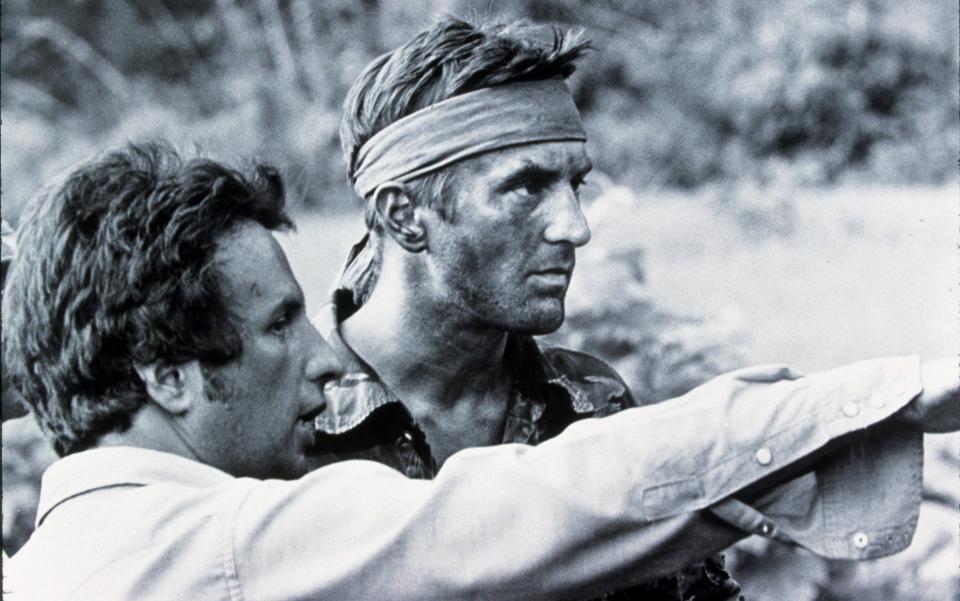
The Deer Hunter is almost entirely white, apart from some black extras. Full Metal Jacket features just two black characters, one per half. Good Morning Vietnam is the Robin Williams show. And the lump-headed Forrest Gump becomes the living embodiment of the white American Dream – a Nam hero who’s too stupid to be phased by the fact that war is, in fact, hell.
As pointed out by the BBC's Kaleem Aftab last week, Apocalypse Now has a fairer representation. Black soldiers lead the charge in the Do Lung Bridge battle scene (the frontlines were known as “Soulville” because of how many black soldiers were posted there), though Martin Sheen and Marlon Brando set the standard for white archetypes in Vietnam movies.
Hamburger Hill, which came out the year after Platoon, does a better job. Telling the story of the 101st Airborne’s assault on Dong Ap Bia, it has prominent black characters – the most interesting in the film – and plays on racial tensions. There’s even an argument about which music gets played on the radio.
But more positive representations are outmuscled by the likes of Rambo and Chuck Norris, whose return-the-Nam films are Hollywood at peak whitewashing – white masculinity reclaiming the history.
Da 5 Bloods references Hollywood’s changing of history. “You’ve got to be f–––––– kidding me,” says Clark Peters' Otis "Out there trying to save some imaginary POWs... I would be the first cat in line if there was a flick about a real hero. One of our bloods, somebody like Milton Olive.
Spike Lee’s film couldn’t be better timed. In every way, his black veterans are still fighting the war.


